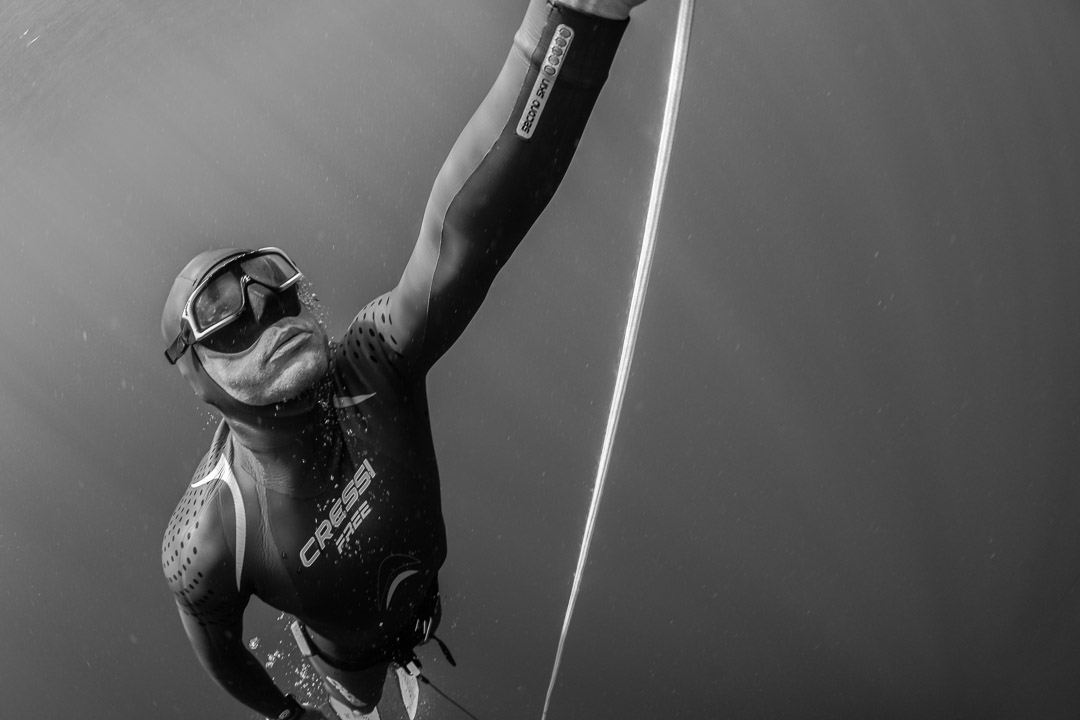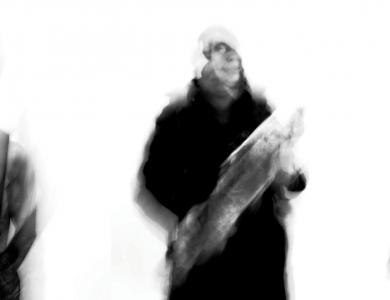
Kohei Ueno picked up his first DSLR camera in 2014 when he quit his job at Google, sold 90% of his possessions and packed what remained into a 40L backpack to travel the world. The turning point was a year later after he returned from his trip and won the grand prize at the 2016 Sony Alpha Art House Competition. This enabled him to upgrade his kit to a professional grade DSLR and invest in some underwater housing, marking the beginning of his career as an underwater photographer. Born in Japan, raised in Singapore and now a permanent resident of Australia, Kohei combines his talent in photography with his passion for freediving to create his imagery. Kohei was awarded 2nd place the Professional competition's Sport category in the 2019 Sony World Photography Awards.
Kohei is taking over our Instagram feed for a week (May 26 to June 1, 2019), sharing a collection of his underwater freediving images. We caught up with him to find out more about him and his photography.
1. The story of your journey into freediving photography is quite unusual, you left a 9-5 job at one of the world's biggest multi-national companies to pursue photography. Why?
After four years of having had the privilege of working at Google, I realized my happiness wasn't stemming from the great perks of the company or the money I received. What I initially thought as important was becoming less so, and I began to wonder what it actually was that I valued the most. I didn’t know the answer, but I knew I had to stop following the rules of what was deemed as successful. I quit my job in 2014 and embarked on a solo trip around the world, visiting places I’ve always wanted to go, motorbiking across continents and capturing amazing moments I never would have enjoyed otherwise. For the first time in my life, I felt like I was truly listening to my heart, and doing things I genuinely loved.
2. What is it about the ocean that inspires you?
Oceans cover 71% of the Earth's surface, yet we still know so little about what goes on in the aquatic world. We can spend all day looking at it from the surface, admiring all the weird creatures and science within it, but until you dive down and experience what it's like you value the wonders of it. For me the ocean is magical, it somehow has the ability to cleanse things, my inner well being. It washes away everything that may have been bothering me on land. It helps to reset my mind, it rejuvenates me, it's almost as if I'm reborn after each and every dive.
3. How has Instagram benefited your career?
I’m relatively new to Instagram and I didn’t pay much attention until a growing number of people started following me and approaching me for prints and other work requests. Now Instagram has somewhat become my primary medium to share work and connect with like-minded individuals and institutions around the world – especially the niché circle of underwater photographers and freedivers. I think Instagram is an indispensable marketing tool to help modern day photographers and artists be recognized and build up valuable networks.
4. Tell us about your most memorable underwater shoot.
The most memorable underwater shoot was when I had an eye to eye, soul to soul moment with a humpback whale in Tonga. The amazing animal stared right into my eyes and mimicked my movements, when I dove down and twisted my body around it did the same, just better. I flapped my arms backwards and forwards and it started to copy me. When I duck dived, it would beat me to it. It may have just been my imagination, but I felt a deep connection and felt so happy that we were able to share such an incredible moment together.
5. What's the most challenging thing about photographing freedivers?
When you’re dealing with photographing freedivers diving down at speeds of one metre per second, things can get really complicated. Not only do you have to adapt to the loss of light at different depths, but you must also adapt to the change in pressure while diving head down with a camera in your hands. While you're getting used to this different environment you've got to compose your shots with as little shakes as possible, fighting against currents, waves, thermoclines and visibility. You've got to do all of this while holding your breath and worrying about your own safety as you go deeper and deeper. The most challenging thing about photography freedivers is that you have to deal with all of the above at the same time. Everything happens so quickly.
6. Equipment-wise, is there anything you swear by on a shoot?
You absolutely need a good pair of long fins! And good underwater housing! Camera insurance might come very handy too, luckily I’ve not had to rely on that, yet.
7. How do you deal with light loss and color absorption when diving to such depths?
You can use underwater strobe lighting and filters however I don’t generally use any of this because when shooting freedivers you're constantly moving at different depths, maneuvering in all different directions, pointing at various angles. There's literally no time for you to plan your shots, you can't pre-empt the conditions or make any fine adjustments. Most of the athletes you're photographing won't be where you want them to be and they understandably wouldn't appreciate flashes of light shining onto their faces while they're trying to relax into a freefall. In my opinion, the best way to deal with light loss is to adapt your depth accordingly, and using a simple rule of framing your shots based on the direction of light and where it hits. I find the depth of 10 to 12 meters is the general sweet spot during a nice sunny day at sea.
Checkout Kohei's takeover on our Instagram feed.



